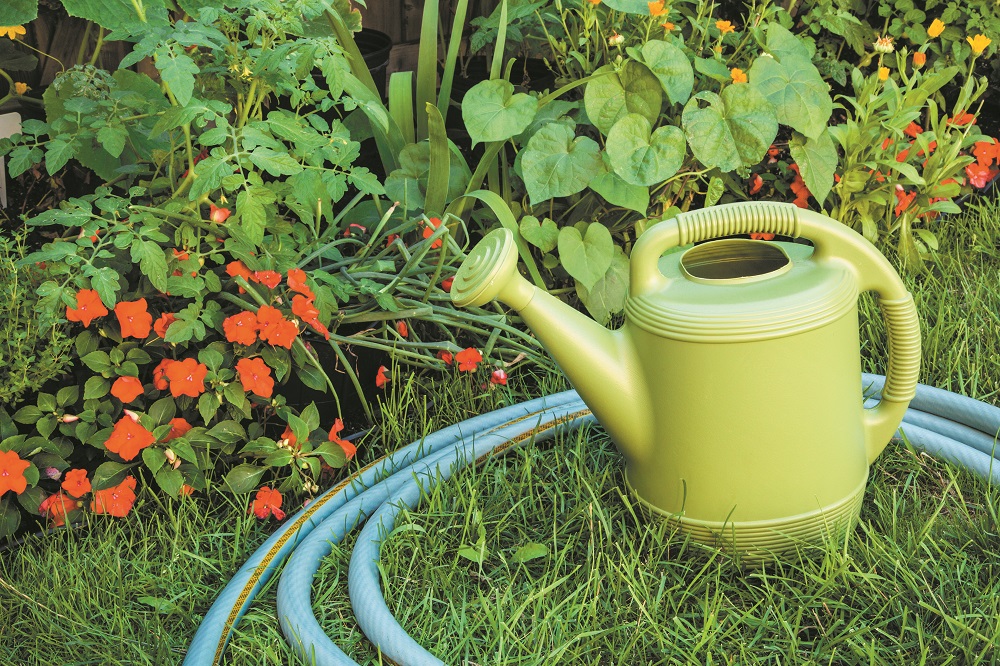Here’s how to lower your water bill and save time and effort when watering your outdoor plants. Bonus: Your plants will become more resilient!
Create basins. To ensure that water goes down into the roots, use your hands or a trowel to create a shallow basin around the base of each plant. The basin’s outer edge should reach to the outer edges of the plant.
Plant in groups. Cluster together plants that have similar water needs. If you’re not sure how much water a plant needs: Ask at the nursery when you buy it, or do some research beforehand. For an existing garden, you may have to move plants around to accomplish “similar-needs” zones, but the effort is worthwhile.
Add mulch to prevent water runoff and evaporation. A layer of mulch two inches deep over planted areas will allow water through and then hold it in place. Use organic materials such as compost or bagged bark mulch.
Water at the optimum time. Morning is ideal. Roots can soak up moisture, and plants enter the hotter parts of the day hydrated. When not to water: In the afternoon, the water will evaporate from the warmed-up soil…and watering in the evening encourages rot in the cooler, damper nighttime hours.
Water the roots, not the leaves. Always water low to the ground. Spraying from the hose and using sprinklers is inefficient and wasteful. Better: Use soaker hoses or in-ground irrigation systems.
Soak, but less often. Occasional but thorough watering encourages roots to grow deeper, which sustains plants between waterings and allows them to cope better with dry spells.
Use stop-start watering. For an individual bush or tree: Set a hose at the plant’s base, and let the water trickle for five or 10 minutes. Then turn off the hose, and let the moisture soak in. Repeat at least two or three times to make sure the water soaks in deeply. For a garden: Snake a soaker hose among the plants. Install a timer at your hose spigot, and program it accordingly.


